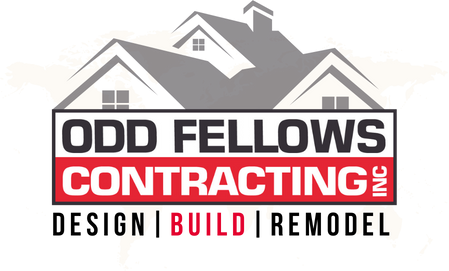
Remodeling projects seem to have some common high and low points for many owners. If you are a seasoned remodeling veteran, you may already know what to expect and may not need to read this letter.
If you have not lived through a remodeling project before, however, you are probably approaching your project with some degree of both anxiety and excitement. The purpose of this letter is not to cast a shadow of doubt on your project before it starts, but rather to simply point out some of these high and low points that naturally occur in the course of most remodeling projects. This way, you will a have a realistic idea of what to expect.
First, every remodeling job creates some degree of disorder, dust, uncertainty, and inconvenience. People will be tearing apart your house and putting it back together again – many of them people you have never met. We understand that this can be an unsettling experience and, accordingly, our crews and subcontractors will respect the fact that this is your home they are working in and not a vacant warehouse. We want to know immediately if you have any problems in this area so that we can take immediate steps to correct them.
Remodeling Happens In Stages
Remodeling proceeds in stages. One of the most difficult stages is working through the plan and permit process. We will work with you to ensure that these important first stages go smoothly and that your ideas and needs are incorporated into the design. Our relationship with the local building departments ensures that the permit process goes without a hitch.
Another difficult early stage is the demolition phase. The insides of your house will be exposed. Electrical, heating, or plumbing services may be intermittently interrupted during this time. Dust, dirt, debris piles, and dumpsters will be visible in and around the work area and in your home. All of this can be rather stressful.
However, don’t worry – the demolition phase goes quickly, and will be cleaned up just as rapidly. Once the framing nears completion, people usually feel very optimistic and start to see the light at the end of the tunnel.
 Framing Stage
Framing Stage
After the framing is completed and the plumbing, electrical, and mechanical work are under way, the project can appear to slow down because the progress is not as dramatic and visible as in the framing phase. However, a lot of detail work is done at this time. For instance, there are many required inspections by building officials. It’s critical that the work be done thoroughly at this point prior to insulating and closing the walls with drywall.
Drywall & Finish Stages
Next comes the drywall stage which most people are excited about. When the walls are covered with drywall, suddenly the rooms take on their true proportions and people start to imagine what it will be like to move back in.
Unfortunately, the final phase of all the work, after the drywall, can seem to take a long time. The finish work – interior and exterior painting; installation of all interior doors and finish woodwork; installation of cabinets, tile, and floor coverings; installation of finish plumbing and electrical fixtures; installation of shelving, closet poles, mirrors, glass shower doors, hardware, appliances, etc. — requires a fair amount of time and the efforts of many different subcontractors.
Project Completion!
Nevertheless, thanks to a well-planned and coordinated scheduling effort during this phase, the day arrives when your project is completed. Finally, your house is once again your private residence, free of the constant construction activity that has transformed your ideas and plans into the new spaces that we hope you will enjoy.
